Browsers, Not Apps, Are Still The Future Of Mobile

In late 2016, whilst leading the Developer Platform team at Intercom, I published a blog post titled “Browsers, not apps, are the future of mobile.”
It quickly became the most-read post published on Inside Intercom that year, and generated a lot of debate — externally on Hacker News and Medium, and internally within Intercom. At one point I was summonsed to the Inside Intercom podcast to explain myself. For some people, I had hit a nerve.
So, 18 months later, what’s changed?
Are native apps dead yet? Are browsers and the web still the future of mobile? What is a browser, anyway? Let’s dig in.
Revisiting the three theories
The main argument of the post was this: browsers and the web are fast becoming the mobile operating system of the future, and native mobile apps are dying. There were three theories core to the argument, each of which i’ll revisit and reexamine here.
Theory 1: Native apps are good for some things but not all things
Recent mobile infrastructure, standards, and product development trends are fast making this theory a reality for most internet businesses. Granted, native apps are still useful for services like messengers and social networks — all of which demand hours of user time daily (more on those types of apps later). For everything else, though, native apps are bloated and unnecessary.
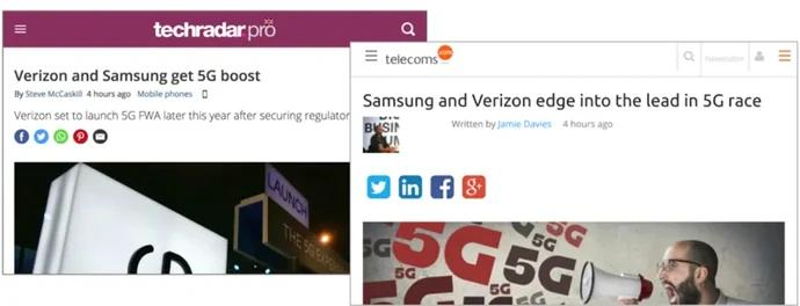
Networks like Verizon have confirmed their ambition to launch 5G broadband before the end of 2018. A battle between Samsung, Ericsson, Nokia and Huawei to become the 5G infrastructure provider of choice is also hotting up. Native apps were useful at a time when spotty 2G connections meant our smartphones were in offline mode most of the day. 5G is slated to be about 10 times faster than 4G, with less latency to boot — the ‘pipes’ are in place to enable fast and immediate streaming of immersive and responsive experiences through the browser. No need for native apps.
Standards have evolved quickly too, in favor of the mobile web. Fast-following Chrome and ChromeOS, Microsoft launched Progressive Web Apps to Microsoft Edge and the half a billion devices running Windows 10. This is a huge leap towards adoption of browser based progressive mobile web apps, particularly for enterprise users. And, hidden in the release notes of Safari 11.1 on iOS 11.3, was the addition of Service Workers and Payments APIs, key elements of progressive web apps. Apple still rely on Native apps sold through their App Store to bolster revenues, hence the lack of fanfare about this update. But developers now have a viable web based alternative to native apps.
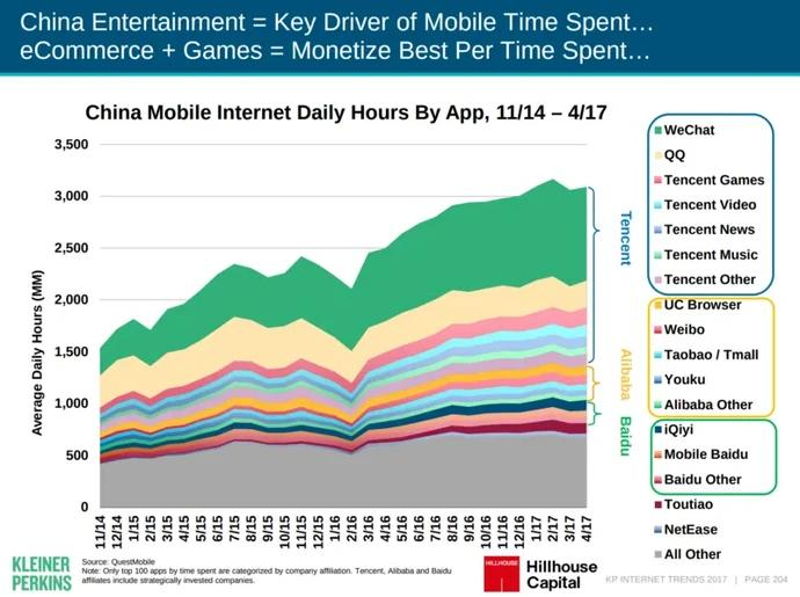
Realising that native apps are good for some things, but not all things, businesses are allocating resources to progressive web apps over iOS or Android apps. Platforms like Mobify are helping retailers like Debenhams, Crocs, and Lancome to make the transition. The frictionless mobile web experience (no native app download required) gave Lancome a 17% lift in mobile revenue, whilst Debenhams reported double digit increases in mobile revenues within weeks of launching their progressive web app. Money talks, and there’s more of it to be made on the mobile web if you’re an ecommerce business.
Theory 2: We spend more time in mobile web browsers than we think
Key to this theory is an evolving definition of what a ‘browser’ is.
We’re still spending increasing amounts of time inside messaging apps and social networks, themselves wrappers for the mobile web. They’re new types of browsers, bringing social context and connections into the experience, something traditional browsers lack. And, in markets like India and China, these social networks and messengers are main way new internet users discover content on the web. The lines that divide traditional browsers, social networks, and messengers are blurring quickly.
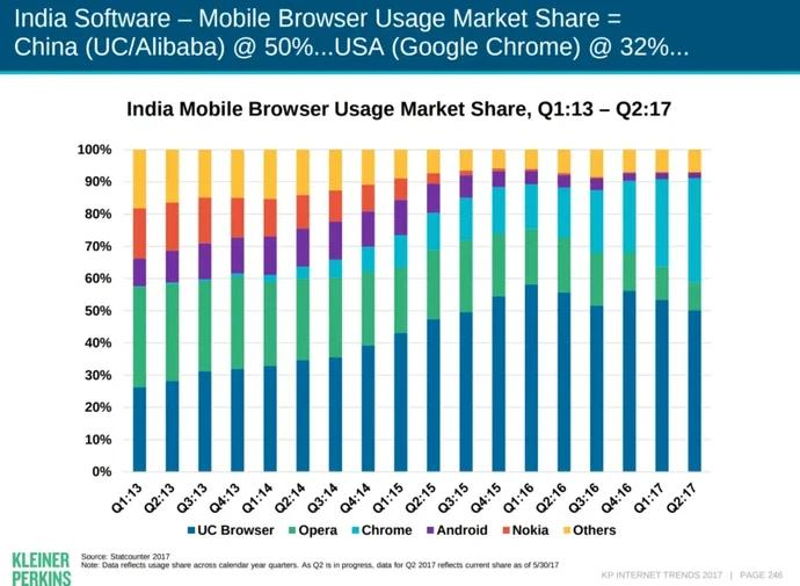
Mary Meeker’s excellent KPCP 2017 Internet Trends report highlights just how blurry those lines have become. The slide below on China tells some interesting stories. Aside from Tencent now dominating the market over incumbents Alibaba and Baidu, messaging apps like WeChat (Tencent) are directly compared to ‘traditional’ browsers like UC Browser (Alibaba). In China, legacy categorisations like ‘social network’ or ‘browser’ don’t matter. What matters are the tools that enable users to create, consume, and share information with each other, and the usage of those tools. On mobile, traditional browsers are but one of these tools.
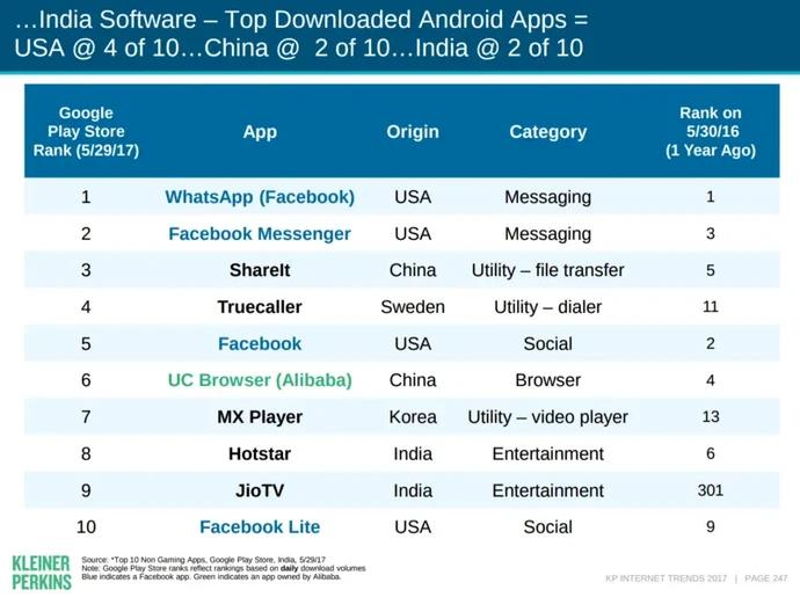
These slides on India tell a similar story, even if it’s not immediately apparent. One one hand, ‘Mobile Browser Usage Market Share’ only includes traditional browsers like UC Browser, Opera, and Chrome. Messengers and social networks are nowhere to be seen.
The full story becomes clear one slide later. Of the Top 10 Downloaded Android Apps, UC Browser appears just 6th in the list, far behind WhatApp and Facebook Messenger in 1st and 2nd place — both comparable products to WeChat in China. Let’s not forget that UC Browser was mentioned as the market leading mobile browser in the previous slide. This is not accurate. Users in India are primarily creating, consuming and sharing information through messengers, not through traditional browsers.
It’s time to rethink our definition of what a browser is. Why do we use social networks and messengers? In part, to discover relevant information based on friend recommendations and to ask businesses for product recommendations. The information shared back to us includes links to pages on the internet. This is browsing the web, just a more modern and personalised way of doing it.
Theory 3: Bots, the new way to browse
This is the idea that bots are new type of intelligent, dynamic bookmark for mobile web browsers. Based on previous messenger interactions, bots push us relevant content, with improved relevancy over time. Like a social network feed, but based on your interactions only — not those of your friends.

For the most part, this has come to pass. Pinterest acknowledged the value of this new way to browse the internet through their bot, which recommends new pins based on users’ previous requests and interactions. AI curation bots like Neil take this idea one step further, by using like, dislike, and bookmark additions as signals to improve the relevancy of recommendations.
In Mexico, airline Aeromexico leveraged the power of Facebook Messenger bots to provide destination inspiration to customers, help them book flights, and guide them to knowledge base content to address frequently asked questions. And Tommy Hilfiger took the ecommerce browsing experience to Messenger through their “See now, buy now” bot, which allows customers to purchase items featured on a virtual runway. Just two of the 300,000 active bots available on Facebook’s Messenger platform.
What this means for today’s developers and start ups
The evolution of the internet has come full circle. Whereas the world wide web started out as a collection of connected sources of information, native mobile apps siloed that information again, adding friction to our experience. Progressive web apps, and improved 5G connectivity are set to break those silos, reinstating the web as the most popular mobile operating system in the world — not iOS or Android.
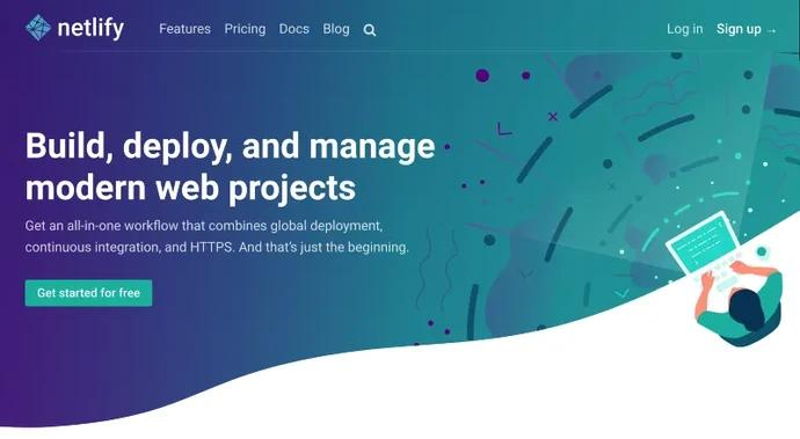
For developers and start ups, this means a dedicating more focus to mobile web technologies, from progressive web apps, to new ways of delivering those apps closer to users and their mobile devices. New tools like Netlify have made this easier and cheaper than ever. It also means valuable time is spent creating new value — not reinventing the wheel across multiple operating systems.
And where do distribution opportunities exist — not just in China and India, but globally? The biggest opportunities are still in consumer social and messaging apps, the new mobile browsers for an increasingly bot-enabled world.
